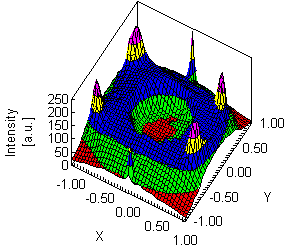 Neutron scattering from a surfactant surface |
Physical and Theoretical Chemistry |
 Neutron scattering from a surfactant surface |
Physical and Theoretical Chemistry |
The Physical and Theoretical Section of the School of Chemistry encompasses a very wide range of research interests. These activities partition very loosely into two main sub-groupings, covering broad areas of Molecular Science and of Colloid and Condensed Phase Science, all of which build on the longstanding strength of the School as a leading international centre for physical and theoretical chemistry. Research seminars by invited external speakers are also held regularly.

Research within the Molecular Science Group sub-divides into several broad, and overlapping, subject areas.
Laser Chemistry (Professors Ashfold and Dixon, and Drs. Orr-Ewing and Western):
|
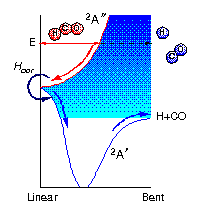 Potential Energy Surface for Dissociation of HCO |
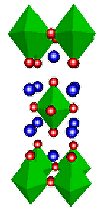 Modelling the structures of High Tc Superconductors |
Computational Chemistry (Professors Balint-Kurti and Dixon, and Drs. Allan, Harvey and Mulholland):
|
Atmospheric Chemistry (Drs Nickless, Shallcross, Orr-Ewing, Harvey):
|
 The expanding hole in the ozone layer... |
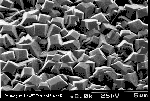 An SEM photo of a CVD diamond film |
Diamond and Diamond-like-Carbon (DLC) Film Growth (Prof. Ashfold and Drs. May and Riley):
|

Present or recent past support for these research programmes has been provided by (amongst others) the research councils (EPSRC, BBSRC, NERC and PPARC), Department of Trade and Industry, Leverhulme Trust, European Union, Royal Society, DERA, De Beers, MSI, Silicon Graphics Inc., ICI, English China Clays, British Gas, Oxford Materials, Arima Computer Corp., Spectra-Physics (U.K.) Ltd., Thomas Swan and Co. Ltd.

Research within the Colloid and Condensed Phase Group also sub-divides into several overlapping subject areas.
Colloidal Suspensions and Surfactants (Prof. Vincent and Drs. van Duijneveldt, Eastoe, Thompson):
|
 Polymer Capsules |
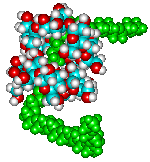 A polymer |
Polymers and Surfactant Monolayers at Surfaces (Profs. Cosgrove and Vincent):
|
Physical Electrochemistry (Dr Riley):

Present or recent past support for these research programmes has been provided by (amongst others) the research councils (EPSRC, BBSRC and NERC), Department of Trade and Industry, Leverhulme Trust, European Union, Royal Society, DERA, Kodak, Ciba Gigey, Glaxo Wellcome, Astra Zeneca Institut Laue Langevin and ISIS Rutherford Appleton Laboratory.

Collaborative research programmes exist within the Section, with other groups in Chemistry, with colleagues in Biochemistry, Geology, the Interface Analysis Centre, Mechanical Engineering and Physics at Bristol, and with many groups elsewhere in the U.K. and abroad.

Significant developments affecting the Section include:
1. All of the research space occupied by the Physical and Theoretical Section will be refurbished during the next two years following the recent successful bid to the Joint Infrastructure Fund (JIF). This award will also provide substantial funds for new equipment, adding to recent successful bids for instrumentation under JREI and the Research Councils.
2. Recent staff appointments:
3. Recent staff awards:

Enquiries about research and postgraduate study in Physical and Theoretical Chemistry at Bristol are welcomed, in writing or by e-mail, and should be directed either to the Head of Section (Professor B. Vincent) or to the individual staff member (or members) of particular interest. Prospective students are welcome to visit the Section by arrangement in order to meet staff and students, discuss projects and to see the School of Chemistry. Further information on how to apply for a Ph.D., including details of possible funding routes, can be found from the Graduate School web page.


 To view
the current list of Postgraduate Vacancies in the Department, click
here.
To view
the current list of Postgraduate Vacancies in the Department, click
here.

Information is still available about some of the areas of research which were previously studied in the section, but which we are no longer actively involved in. These are:

 Back
to Bristol
University Chemistry Dept Home Page.
Back
to Bristol
University Chemistry Dept Home Page.

Usage statistics. Customised Stats Form.
Last modified [an error occurred while processing this directive].
Chemistry Webmaster.